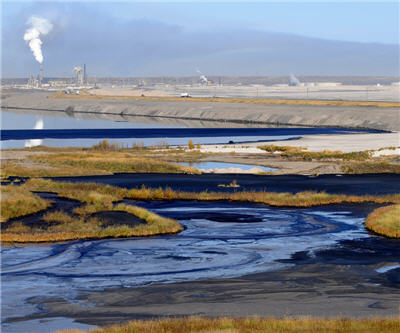
Oil sands miners in northern Alberta are pooling new knowledge to tackle an old foe: tailings.
It’s an unusual collaboration in an industry that is famously secretive for fear of losing an edge to competitors.
The StarTribune reports on how companies participating in the Oil Sands Tailings Consortium — a 7-member group formed last December to share tailings research and technology — are spending over $90 million this year to address the common problem of how to dispose of wet tailings left behind when bitumen is extracted from oil sands.
The collabaration is being driven by new regulations forcing companies to reduce the amount of wet tailings, as well as by pressure from environmental groups that use unsightly tailings ponds as flash point to draw negative attention to the oil sands:
Imperial Oil and six other companies spent more than a year negotiating the details of their plan to join forces before agreeing last spring to create the Oil Sands Tailings Consortium. Under the final deal, they will pitch in money and research over the next five years — even though it means sharing potentially lucrative intellectual property.
The story points to a technology devised by Suncor that has allowed the company to cancel plans to build five new tailings ponds; instead, Suncor will reclaim seven of eight existing tailings impoundments. The technology, which has been opened to competitors, applies a polymer flocculent to mature fine tailings, allowing them to dry in two weeks.
ConocoPhillips, meanwhile, is trying to reduce the amount of steam used to soften bitumen, says The StarTribune:
The company has joined Nexen, Suncor, Total and Statoil on that effort, and is preparing to test a plan for replacing some steam with a natural gas liquid mix to help draw out the bitumen.
Other approaches, described in a July 30th article in The Financial Post, include the use of thickeners (Royal Dutch Shell PLC) before the tailings are pumped into storage ponds; pumping water on top of tailings (Syncrude Canada Ltd.); and adding carbon dioxide to the tailings to speed up drying time (Canadian Natural Resources Ltd.)
For a detailed explanation of these technologies, as well as a good discussion of Directive 074, the regulations around oil sands tailings issued by the Albert government, read a feature article that appeared last year in MINING.com.